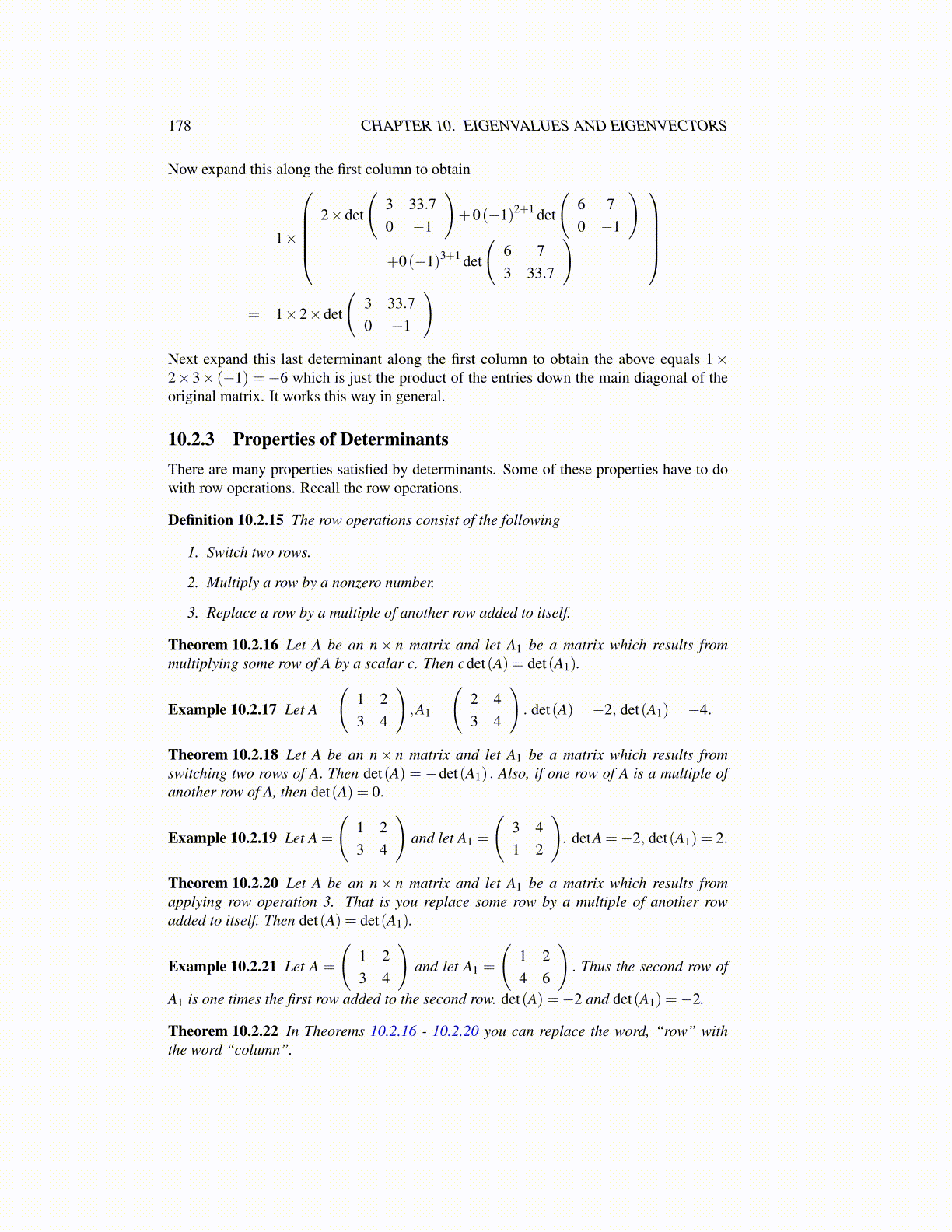
178 CHAPTER 10. EIGENVALUES AND EIGENVECTORS
Now expand this along the first column to obtain
1×
2×det
(3 33.70 −1
)+0(−1)2+1 det
(6 70 −1
)
+0(−1)3+1 det
(6 73 33.7
)
= 1×2×det
(3 33.70 −1
)Next expand this last determinant along the first column to obtain the above equals 1×2×3× (−1) = −6 which is just the product of the entries down the main diagonal of theoriginal matrix. It works this way in general.
10.2.3 Properties of DeterminantsThere are many properties satisfied by determinants. Some of these properties have to dowith row operations. Recall the row operations.
Definition 10.2.15 The row operations consist of the following
1. Switch two rows.
2. Multiply a row by a nonzero number.
3. Replace a row by a multiple of another row added to itself.
Theorem 10.2.16 Let A be an n× n matrix and let A1 be a matrix which results frommultiplying some row of A by a scalar c. Then cdet(A) = det(A1).
Example 10.2.17 Let A =
(1 23 4
),A1 =
(2 43 4
). det(A) =−2, det(A1) =−4.
Theorem 10.2.18 Let A be an n× n matrix and let A1 be a matrix which results fromswitching two rows of A. Then det(A) = −det(A1) . Also, if one row of A is a multiple ofanother row of A, then det(A) = 0.
Example 10.2.19 Let A =
(1 23 4
)and let A1 =
(3 41 2
). detA =−2, det(A1) = 2.
Theorem 10.2.20 Let A be an n× n matrix and let A1 be a matrix which results fromapplying row operation 3. That is you replace some row by a multiple of another rowadded to itself. Then det(A) = det(A1).
Example 10.2.21 Let A =
(1 23 4
)and let A1 =
(1 24 6
). Thus the second row of
A1 is one times the first row added to the second row. det(A) =−2 and det(A1) =−2.
Theorem 10.2.22 In Theorems 10.2.16 - 10.2.20 you can replace the word, “row” withthe word “column”.